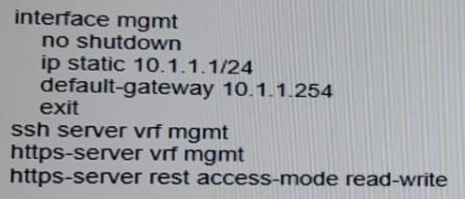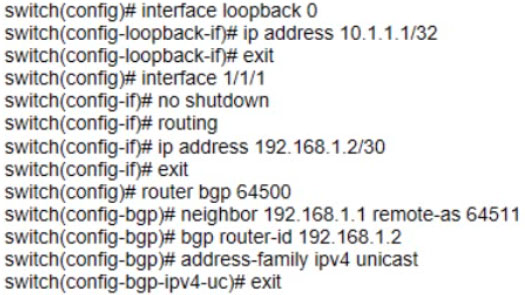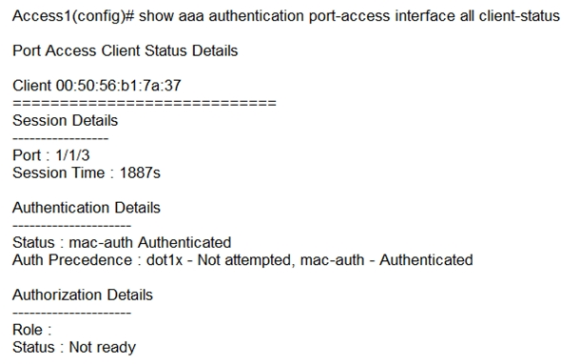HP HPE6-A73 - Aruba Certified Switching Professional Exam
What is correct regarding the tunneling of user traffic between AOS-CX switches and Aruba Mobility
Controllers (MCs)?
Examine the commands entered on an AOS-CX switch:
What is true regarding this configuration for traffic received on interface 100?
Examine the AOS-CX configuration:

The switches have a default factory password setting NetEdit fails to access the configuration of the AOS-CX switches. What should the administrator do to solve this problem?
What is correct regarding the operation of VSX and multicasting with PIM-SM routing configured?
What is correct regarding rate limiting and egress queue shaping on AOS-CX switches?
A network administrator is tasked to set up BGP in the company's network. The administrator is defining an eBGP peering between an AOS-CX switch and a directly-connected service provider. The administrator has configured the following on the AOS-CX switch:

However, when using the "show bgp all summary" command, the state does not display "Established" for the eBGP peer. What must the administrator configure to fix this issue?
An AOS-CX switch is configured to implement downloadable user roles. Examine the AOS-CX switch output:

Based on this output, what is the state of the user’s access?
How does PIM build the IP multicast routing table to route traffic between a multicast source and one or more receivers?



